
The radius of the left piston is \( 0.12 \) \( \text{m} \) and the radius of the right piston is \( 0.65 \) \( \text{m} \). If \( f \) were raised by \( 14 \) \( \text{N} \), how much would \( F \) need to be increased to maintain equilibrium?
Two identical solid disks, each of mass \( M \) and radius \( R \), are welded together so that they touch at exactly one point on their rims. Determine the moment of inertia of the combined object about an axis that is perpendicular to the plane of the disks and passes through their point of contact. Hint: The moment of inertia of a solid disk about its center is \(\frac{1}{2} M R^{2}\).
In a controlled experiment, engineers test a firecracker. The firecracker has mass \( m \) and is placed at rest on a horizontal surface. When the firecracker is lit, it explodes and breaks apart into two pieces. In the first trial, one piece with mass \( \frac{m}{2} \) moves to the left with speed \( v_L \) and the other piece moves to the right with speed \( v_R \). A second trial is performed with an identical firecracker, and one piece with mass \( \frac{3m}{4} \) moves to the left, again with speed \( v_L \). What will the speed of the other piece be in this second trial?
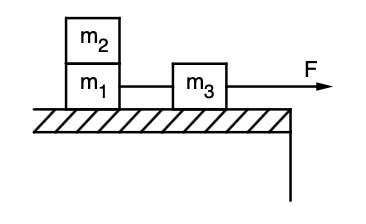
Block \(m_1\) is stacked on top of block \(m_2\). Block \(m_2\) is connected by a light cord to block \(m_3\), which is pulled along a frictionless surface with a force \(F\) as shown in the diagram above. Block \(m_1\) is accelerated at the same rate as block \(m_2\) because of the frictional forces between the two blocks. If all three blocks have the same mass \(m\), what is the minimum coefficient of static friction between block \(m_1\) and block \(m_2\)?
A skier with a mass of \(58 \, \text{kg}\) glides up a snowy incline that forms an angle of \(28^\circ\) with the horizontal. The skier initially moves at a speed of \(7.2 \, \text{m/s}\). After traveling a distance of \(2.3 \, \text{m}\) up the slope, the skier’s speed reduces to \(3.8 \, \text{m/s}\).
There are two cables that lift an elevator, each with a force of \(10{,}000 \, \text{N}\). The \(1{,}000 \, \text{kg}\) elevator is lifted from the first floor and accelerates over \(10 \, \text{m}\) until it reaches its top speed of \(6 \, \text{m/s}\). What is the mass of the people in the elevator?
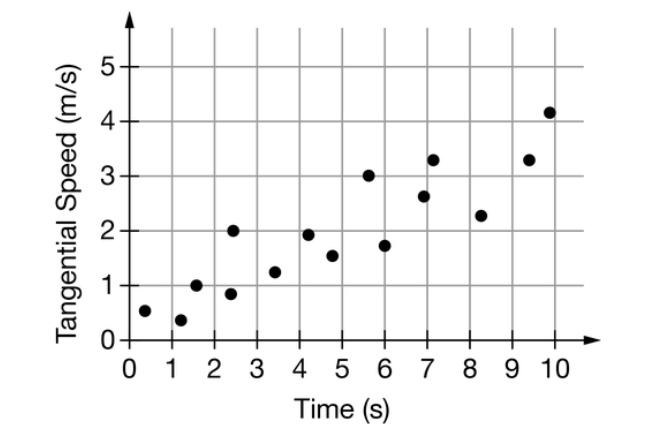
In an experiment, an external torque is applied to the edge of a disk of radius \( 0.5 \) \( \text{m} \) such that the edge of the disk speeds up as it continues to rotate. The tangential speed as a function of time is shown for the edge of the disk. The rotational inertia of the disk is \( 0.125 \) \( \text{kg} \cdot \text{m}^2 \). Can a student use the graph and the known information to calculate the net torque exerted on the edge of the disk?
What is the mass of a dog that weighs \(58 \, \text{N}\) on Earth?
A student kicks a soccer ball. The ball exerts a force back on the student’s foot. Why doesn’t the student’s foot accelerate backward as much as the ball accelerates forward?
A child pushes horizontally on a box of mass m with constant speed v across a rough horizontal floor. The coefficient of friction between the box and the floor is µ. At what rate does the child do work on the box?
If the acceleration of an object is \( 0 \), are no forces acting on it? Explain.

Four identical lead balls with large mass are connected by rigid but very light rods in the square configuration shown in the preceding figure. The balls are rotated about the three labeled axes. Which of the following correctly ranks the rotational inertia \(I\) of the balls about each axis?
By continuing you (1) agree to our Terms of Use and Terms of Sale and (2) consent to sharing your IP and browser information used by this site’s security protocols as outlined in our Privacy Policy.
Quick Start Guide
AP physics 1, AP C, honors and advanced physics students.
Quickly filter questions by units and more.


Here’s guide to using 5 UBQ filters.
GQ = general question, MCQ = multiple choice, FRQ = free response.

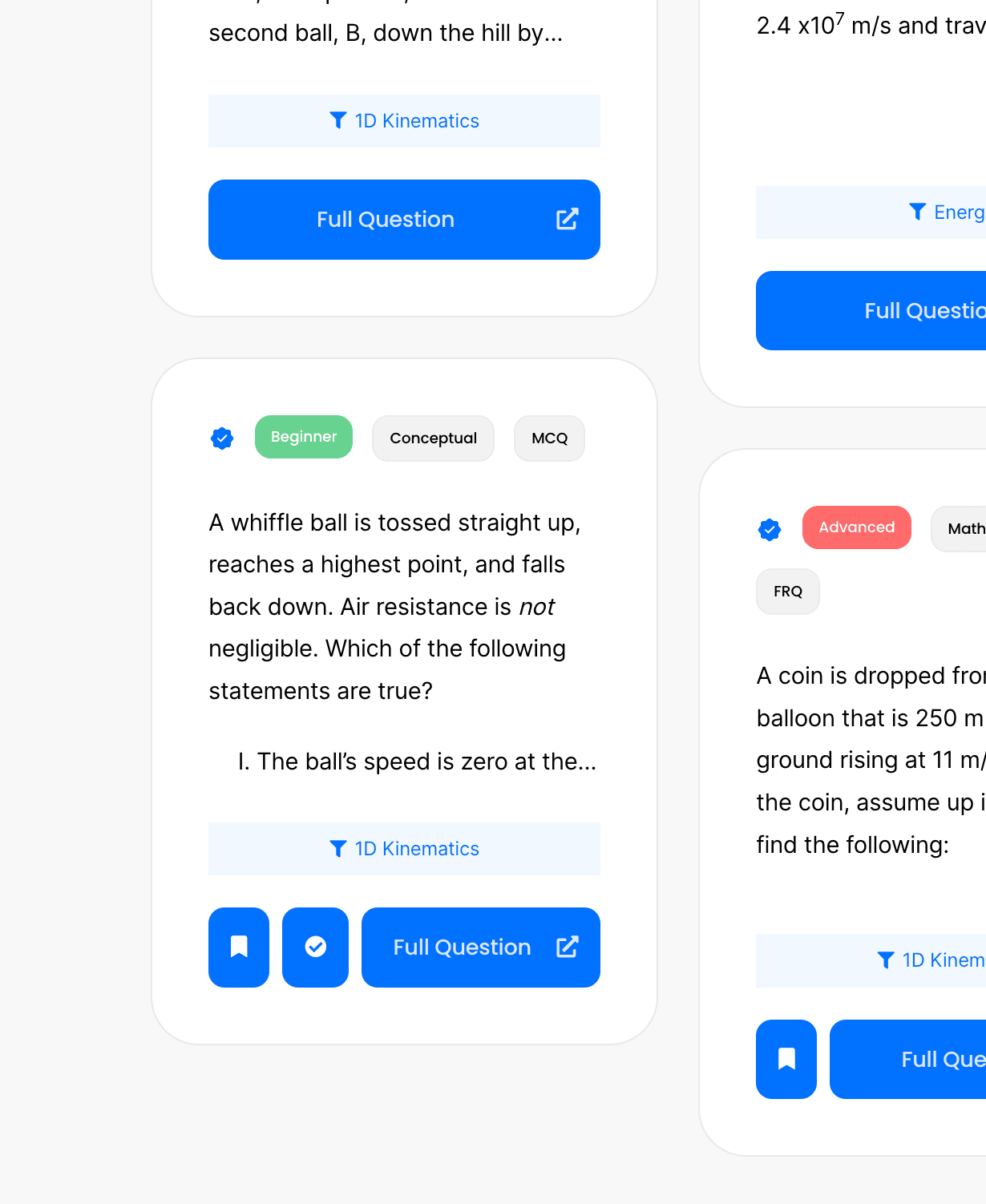
Click the check or bookmark button.
Now you’ll be able to see completed or bookmarked questions at a glance!
Answer keys, personalized for you.
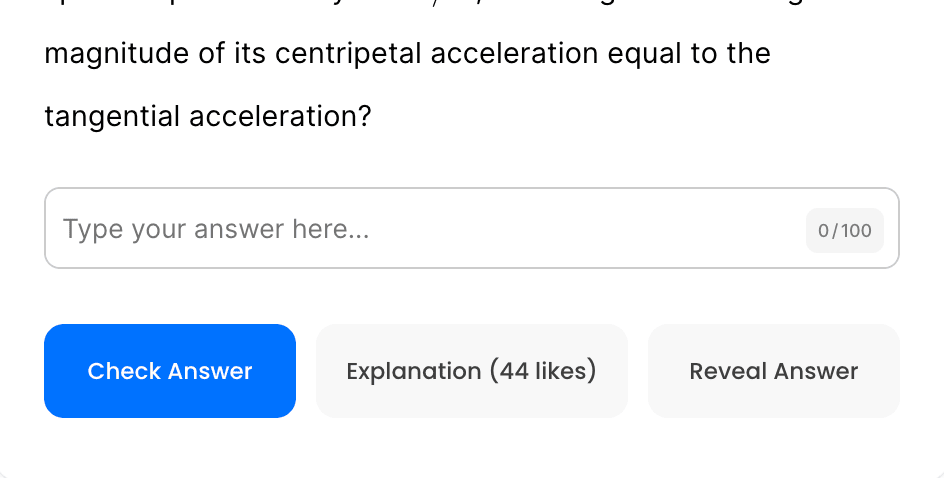
Phy will be responsible for grading your FRQs and GQs.
No more copy and pasting. Just solve and snap.
Questions for Mastery
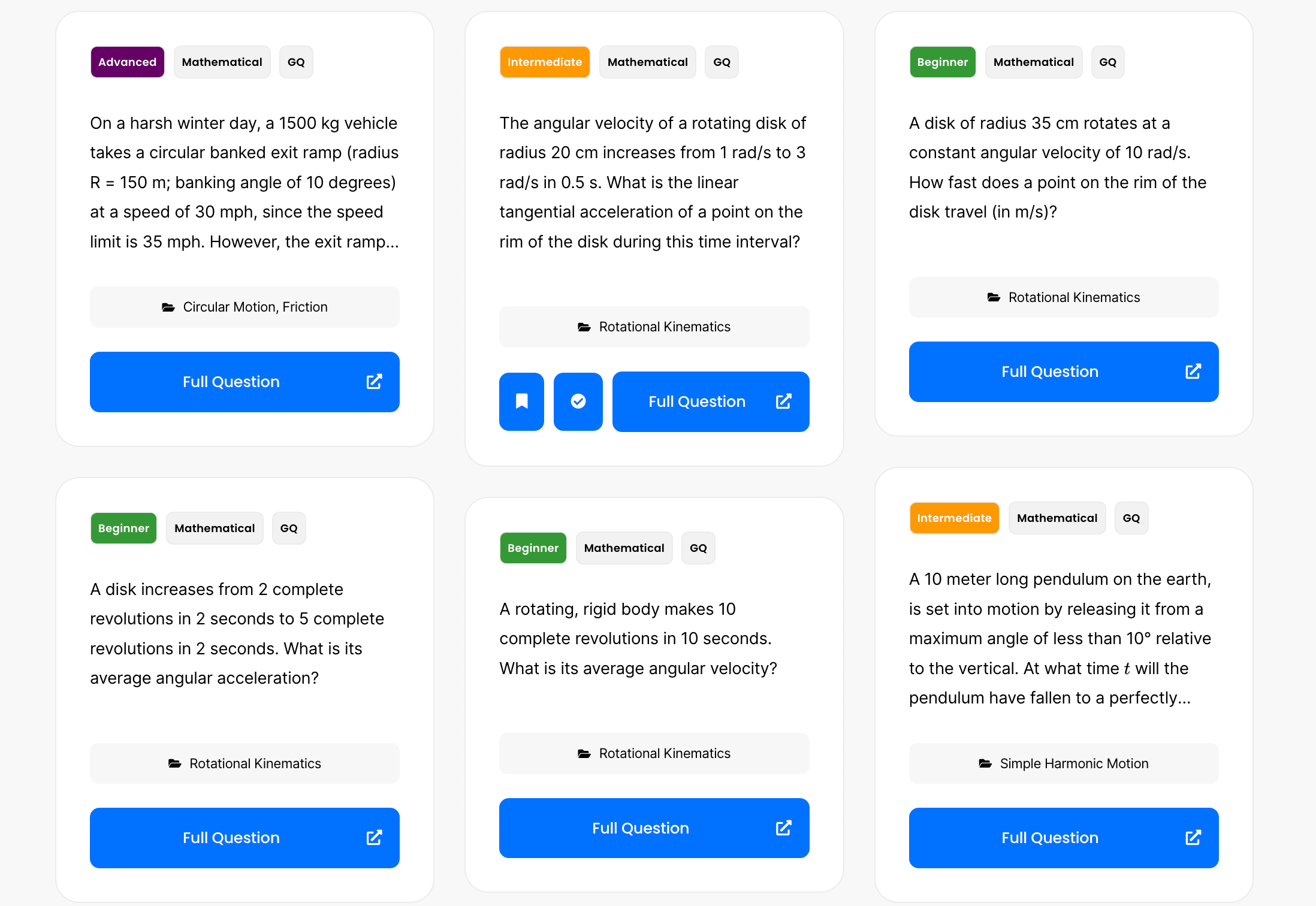
By continuing you agree to nerd-notes.com Terms of Service, Privacy Policy, and our usage of user data.